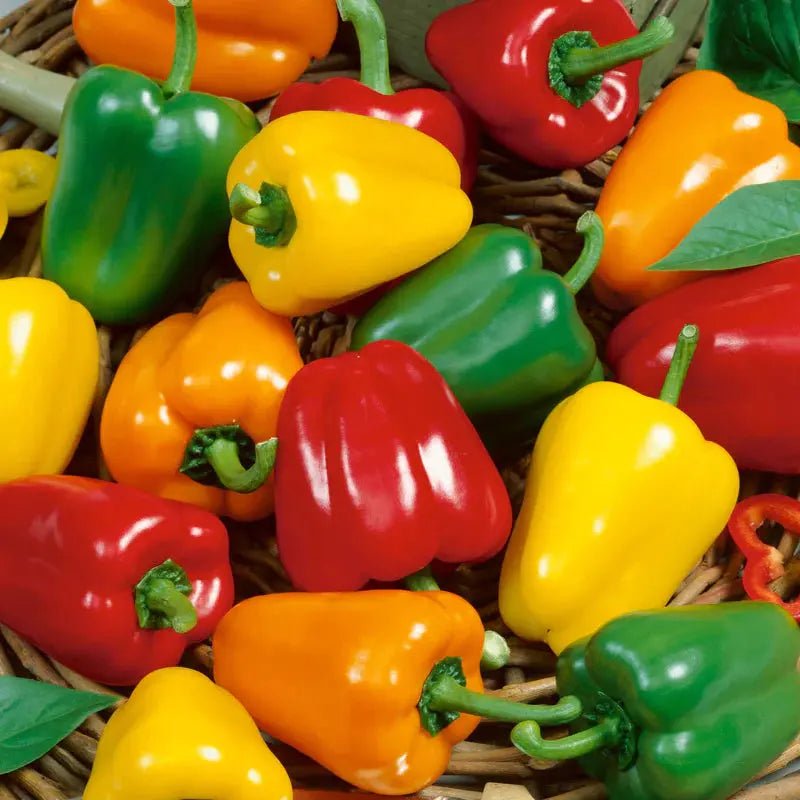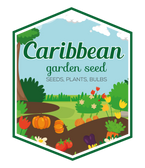
The Ultimate Guide to Growing Peppers in Your Garden
Growing pepper plants in your garden is a fun way to add a pop of color and spice to an otherwise simple vegetable garden. These prolific plants come in so many varieties and, more importantly, flavors that there are a million different ways to utilize these spicy treats. From the sweet bell pepper to the extreme Trinidad Scorpion, choosing the right pepper for your vegetable garden can be a fun process.
Which Type of Pepper Should You Grow?
Peppers have hundreds and hundreds of varieties in all kinds of shapes, colors, sizes, and flavors. A good place to start deciding really comes down to what you and your family like, how you intend to use them, and how much space you have.
While you can absolutely grow peppers from plants that are already established, we always suggest starting pepper plants from seed. Starting your pepper plants from seed gives you the opportunity to have access to unique varieties that commercial growers otherwise don’t as well as the ability to experiment with different types to see what grows best in your garden.
Hybrid & Heirloom Pepper Plants
If you’ve ever explored the world of growing your own vegetables, you’ve no doubt heard the terms hybrid and heirloom. Heirlooms are varieties that have not been crossbred for 40-50 years or more. These varieties can be passed down through generations and keep their characteristics through those generations because of the careful planting to prevent cross-pollination.
Hybrid varieties have been specifically bred to have characteristics that are desirable to the grower. These characteristics can be anything from size, color, flavor, or disease resistance. When planting a hybrid variety, you have a much better idea of the characteristics of the fruit that the plant will produce. Most people tend to be much more successful planting hybrid peppers because of their improved disease resistance.
So which type of pepper do you plant?
Well, we recommend both. Heirloom peppers will have an unexpected yield typically, but what you do get is not only special because of its history, but the flavor is phenomenal. Hybrids are tried and true and will give you a great crop that is reliable. Plant both and experiment with multiple varieties.
Growing Hot Pepper from Seeds
Growing hot pepper from seeds can be enjoyable and sometimes frustrating as the germination can be slow and irregular even when grown under the optimal conditions. Some varieties can take up to 6 weeks and longer to germinate so you must be patient.
The home gardener must understand that varieties come from humid tropical regions and others come from dry desert regions. After years of testing, and by trial and error, we have come up with the best method for growing hot peppers. You should follow the planting instructions below to prevent poor germination, even if you have been growing hot peppers for years using other methods.
Life Cycle:
Zone 8 or lower: Grow as annual
Zone 9 or higher: Perennial
Common Mistakes
Using potting soil instead of lightweight seed starting mix
Over-watering the seeds before they sprout
Too low temperature
Inadequate ventilation
Type of Pots
The best method is to use plastic cell packs or plastic 4” square pots. If you are reusing the plastic pots from last year, remember to soak the pots in 50% bleach before using them. Do not use peat pots as they tend to absorb and retain too much moisture for growing some types of hot peppers.
Seed Starting Mix
Use good quality lightweight seed starting material with slow release fertilizer mixed in. We recommend using Miracle-Gro® Seed Starting Potting Mix.
Planting Method
Fill the plastic containers with the seed starting mix. Plant the seeds 1/4″ deep, or as a general rule, twice as deep as the size of the seed. Remember if you plant the seeds too deep, they may not sprout and rot. Write on a plastic garden marker the variety name and date, then place it in the cell pack or plastic pot.
Water the seeds with very hot water. This will speed up the germination process. Then place the pots in an environment where the temperature will remain around 85 degrees. Some hot pepper varieties may not germinate and rot if the temperature is below 85 degrees. A small utility room will do if you do not have an indoor garden stand greenhouse.
Do not use plastic tray covers when growing hot pepper seeds. They tend to create an environment that is too humid for some hot pepper varieties to germinate. Make sure you have adequate overhead ventilation, as seeds need the proper amount of air (oxygen) to germinate.
The seeds do not need sunlight to germinate, but once they sprout you need to place them under fluorescent lights for 10 to 16 hours per day. You can reduce the temperature to 70 degrees after they sprout.
After the seedlings reach 2″ tall, water the plants once a week with half concentration of liquid plant fertilizer. This will enhance the growth of the plant and give them a good start. After they reach 4” tall, you can water the plants with full strength liquid plant fertilizer. Keep using the overhead fan to prevent disease.
Transplant the plants outdoors in the garden when the plant has reach at least 12″ tall, and 2 weeks after the last frost date. Check your Cooperative Extension Office if you are not sure of the last frost date. Always transplant outdoors on an overcast day, preferably a day before rain is expected.
We recommend using organic fertilizer when transplanting outdoors. This will enhance the root growth which is very important in having healthy and vigorous plants. Your harvest will increase by some 300% if you use these organic fertilizers.
Use black landscaping material to protect the plants from weeds and disease. When it rains, sometimes the soil splashes underneath the leaves which can cause disease. Landscaping material greatly eliminates this problem. It also warms up the soil and retains moisture. To prevent the branches from breaking off with the heavy yields, use round tomato cages. We recommend using soaker hoses or drip irrigation too. They will simplify the watering process.
Apply Slow Release Plant Food around each plant and your are done! Periodically spray the hot pepper plants with Water Soluble All Purpose Plant Food.
Can You Grow Peppers In Containers?
The short answer is ABSOLUTELY! Peppers are highly adaptable for container gardening and are an optimal selection for compact garden spaces. One main reason is that peppers are very sensitive to cold so if you have an unexpected late frost, having your pepper plants in containers makes it very easy to just move the inside and out of the danger of being damaged by frost.
Pepper plants grow like indeterminate tomatoes, with an upward growth habit, ideal for abundant peppers and maximizing garden space.For example, A 15 Gallon Container can comfortably grow up to 4 pepper plants with a tomato cage or heavy-duty stakes and that will give the root structure plenty of room and enough space to grow upward for a really nice pepper harvest.
Growing Hot Peppers in Containers
Peppers can be grown all year long in containers. It is suitable for apartment dwellers and gardeners who live in cool regions where the number of growing days are limited. Many pepper enthusiast grow peppers in pots so they can have fresh peppers all year long. It’s best to use 5 gallon containers so the roots do not get too over-crowded. Please Search Container Gardening for tips on growing hot peppers in containers.
When planting your hot peppers, keep in mind that the warmer the soil is, the happier your plants will be. Also be sure not to crowd them. They need circulation to help resist disease. An easy, organic way to help keep the soil moist for your hot pepper plants is to use grass clippings (if chemically untreated) as mulch. Dry soil is the enemy of hot pepper plants.

![[Seeds] - Caribbeangardenseed](http://caribbeangardenseed.com/cdn/shop/files/gift-card-gift-card-1_1024x1024_dfa857db-9150-4315-a362-7f0bb3fb9c47_60x28.png?v=1722895789)